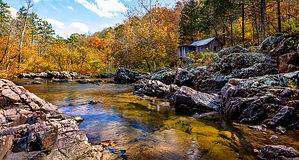Looking to infuse life and elegance into your garden or yard? Consider dwarf conifers! These miniature versions of your favorite spruces, pines, and firs bring in year-round color and a distinct texture to your home. Dwarf conifers are a fantastic way to enhance your outdoor space, be it expansive landscapes or smaller patios.

This article will guide you on the benefits of these compact trees, help you understand what to look for when selecting the right one for your space, present the top picks, and provide tips on planting and care. So, let’s get into it!
10 Benefits of Dwarf Conifers
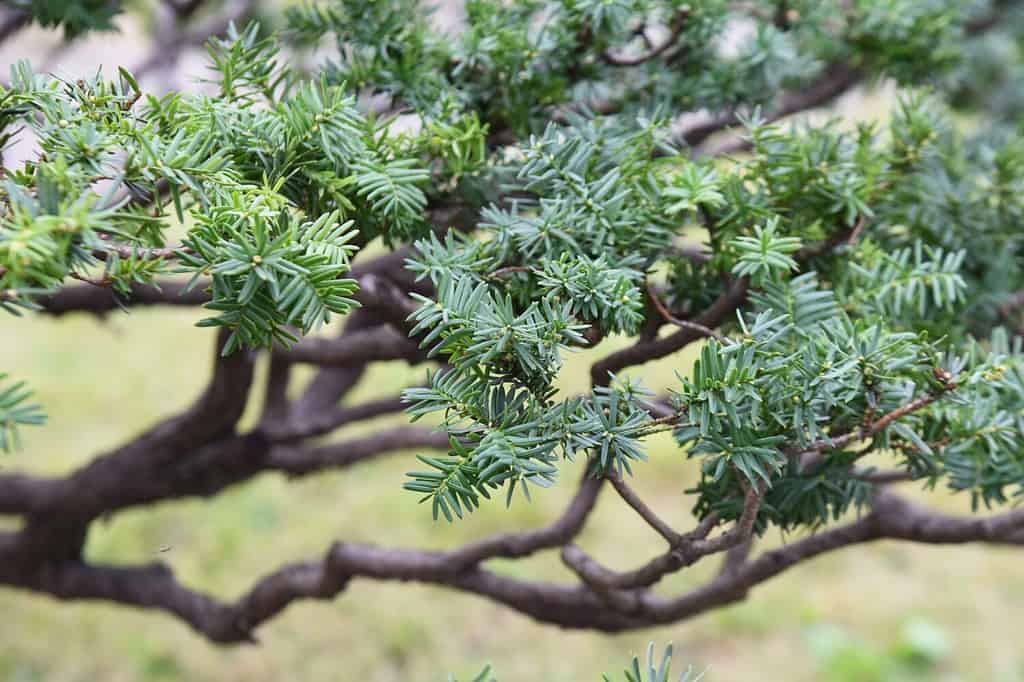
There are many benefits to planting a dwarf conifer.
©tamu1500/Shutterstock.com
Dwarf conifers, also known as miniature conifers, offer numerous benefits when incorporated into your landscape. Here are ten advantages of adding these plants to your garden.
1. Space Saving
Because dwarf conifers are a smaller version of their full-sized relatives, they are perfect for gardens where space is limited. You can enjoy the beauty of a conifer tree without worrying about it outgrowing its space.
2. Low Maintenance
Once small conifers have taken root in your garden, they require minimal attention. The great thing about them is that there’s no need for trimming or removing dead flowers. Moreover, you won’t have to water them too often or be constantly on guard against bugs and pests.
3. Year-Round Color
Unlike many plants that lose their leaves during winter, dwarf conifers generally keep their foliage all year round. This means you’ll have a splash of green (or blue, yellow, or even red, depending on the species) in your garden, even in the colder months.
4. Diversity of Shapes and Textures
Dwarf conifers come in a variety of shapes (from round mounds to upright pyramids) and textures (from soft feathery needles to hard, sharp needles), giving you plenty of options for creating visual interest in your garden.
5. Hardiness
Conifers are generally tough and can survive in a variety of soil types and weather conditions. Many dwarf conifers are even more resilient, making them great for challenging climates.
6. Slower Growing
Dwarf conifers grow slowly, adding just 1 to 6 inches to their height each year. So, over 10 years, they will reach a maximum height of 1 to 6 feet. For the very same reason, they can remain in the same spot for many years without overgrowing their space. This also makes them ideal for use in long-term landscaping plans.
7. Erosion Control
The root systems of dwarf conifers are excellent at preventing soil erosion. This makes them particularly useful on slopes or in areas prone to erosion.
8. Wildlife Support
Conifers provide food and shelter for a variety of wildlife. Bird species, in particular, may use dwarf conifers for nesting, protection, and as a food source. These plants are attractive to finches, nuthatches, chickadees, grosbeaks, and other seed-eating birds as a valuable food source.
9. Screening and Privacy
Even though they are small, dwarf conifers can be used to create a natural screen, adding a sense of privacy to your garden. They can also help block wind and reduce noise.
10. Adaptable to Containers
If your space is really limited, dwarf conifers can be grown in containers. This means you can add a touch of conifer charm to balconies, patios, or other small spaces.
These are just some of the benefits of dwarf conifers. They are a versatile and low-maintenance option that can bring beauty and utility to your garden all year round.
Selection Criteria
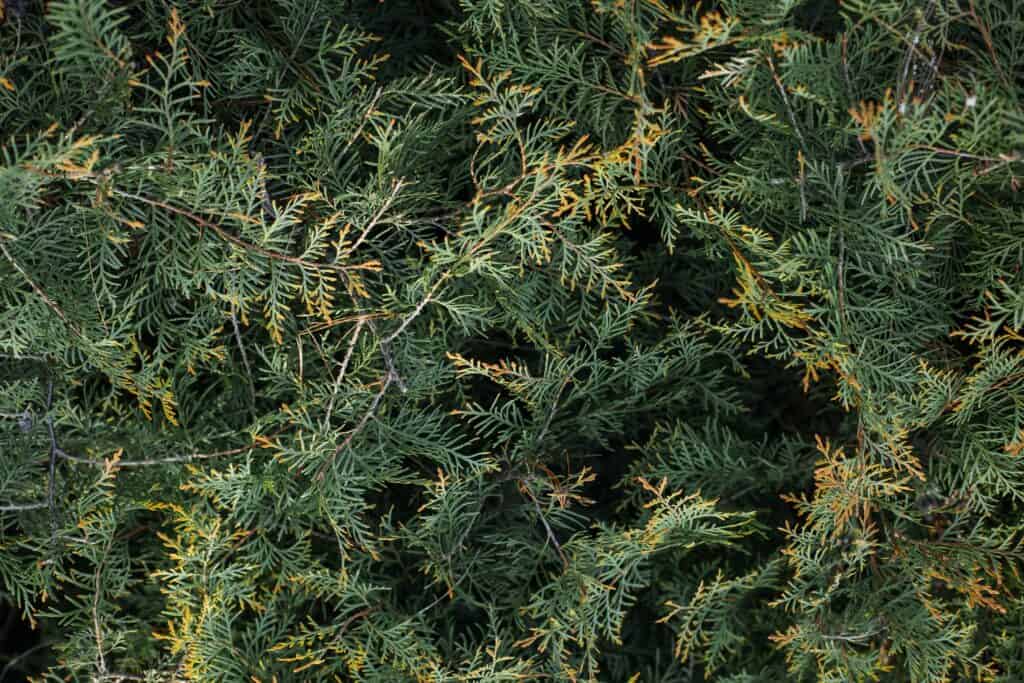
To pick the right dwarf conifer, make sure you consider the size at maturity, growth rate, soil type, sunlight needs, and more.
©Ua_Biologist/Shutterstock.com
Picking the right dwarf conifer is key, as they’re not all the same, and some might not suit your needs. Here are a few things to think about when you’re choosing:
Size at Maturity
Consider how big the conifer will get when it’s fully grown. Remember, “dwarf” doesn’t always mean tiny; some can grow up to 12 feet tall. Choose a plant that fits the space you have available.
Growth Rate
Dwarf conifers grow slower than regular trees, but growth rates can vary between species. If you’re looking for a plant that will quickly fill a space, choose a faster-growing variety.
Soil Type
Different conifers prefer different soil types. Some like sandy soil, while others prefer clay. Check what type of soil you have in your garden and choose a plant that will thrive in those conditions.
Sunlight Needs
While many conifers can tolerate a range of sunlight conditions, some prefer full sun, while others do best in partial shade. Make sure to consider how much sun your garden gets when selecting your plant.
Hardiness Zone
Your climate’s hardiness zone determines which plants will thrive in your area. Check the plant’s hardiness zone before purchasing to ensure it will survive in your garden.
Color and Texture
Dwarf conifers come in a variety of colors and textures. Choose a plant that fits your aesthetic preferences and will complement the other plants in your garden.
Shape
From upright pyramids to round mounds, dwarf conifers have a variety of shapes. Select a shape that will add interest to your garden’s layout.
Watering Needs
While most dwarf conifers are drought-tolerant once established, they have different watering needs while they’re young. Be prepared to provide the right amount of water for your chosen plant.
Pest Resistance
While generally pest-resistant, some dwarf conifers are more susceptible to certain pests than others. It may be worth considering a variety that’s known for its resilience.
Purpose
Are you looking for a plant to provide privacy, add color, or serve as a focal point in your garden? The purpose will help dictate which variety of dwarf conifer you should choose.
Top Picks
Let’s get straight to the top picks of dwarf conifers to spruce up your garden and yard!
1. Dwarf Mugo Pine
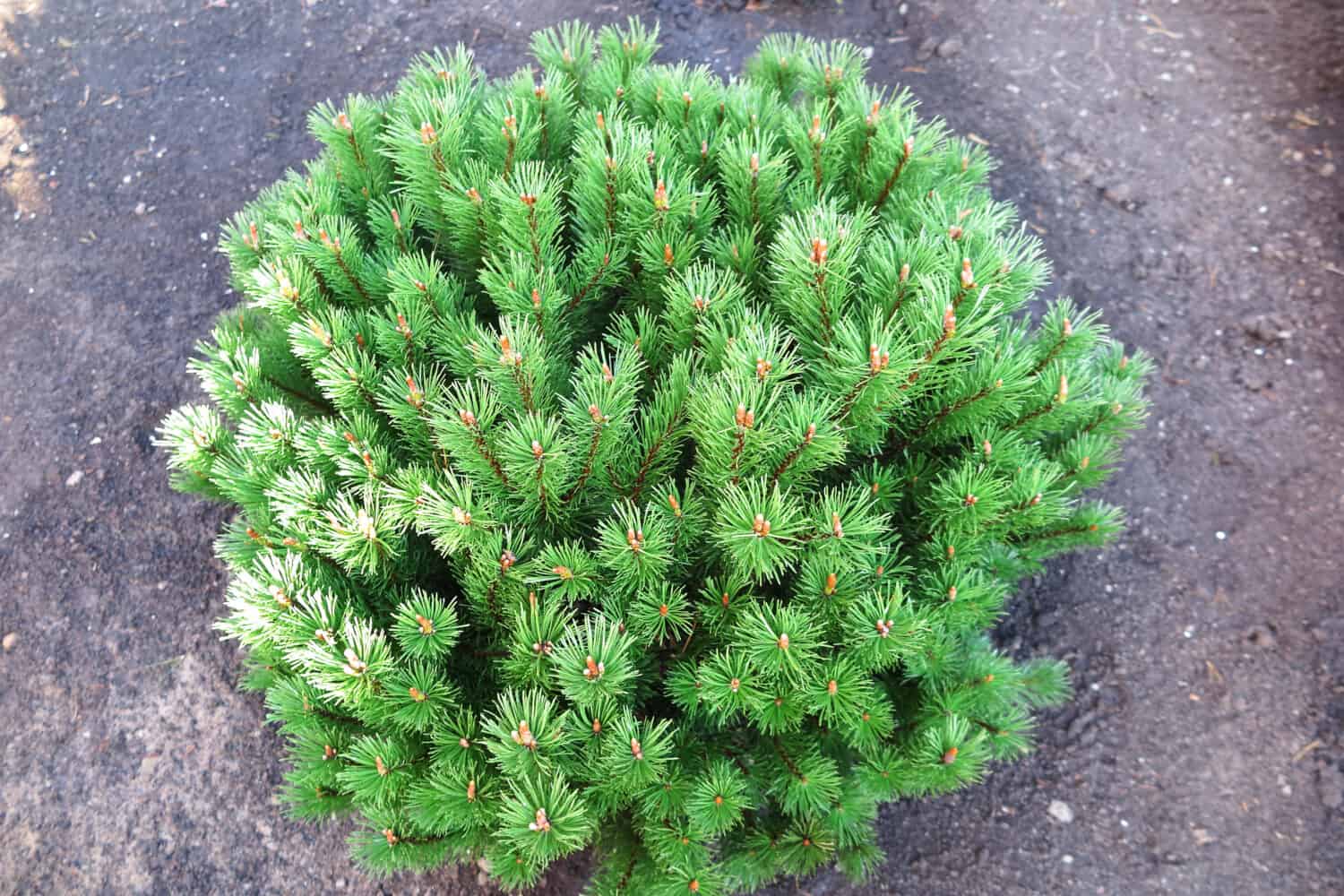
A small shrub, the dwarf mugo pine is incredibly resilient and cold-hardy.
©photowind/Shutterstock.com
The dwarf mugo pine is a charming, small, and spherical shrub characterized by its thick branches and compact, vibrant, and green needles. These needles maintain their lush color throughout the year, even in the chilliest winter climates. This resilient plant can withstand temperatures as low as -50 degrees Fahrenheit, ensuring its survival in even the harshest winters. It can even withstand warmer areas, but some states, including Florida and coastal California, may be too hot.
Varieties like ‘Mops’ and other petite mugo pines are versatile. They serve well as low borders or ground covering and complement the foundations of home landscapes. These dwarf conifers also shine in rock gardens. In some cases, cultivars of this species are crafted into bonsai trees.
These conifers have a slow growth rate, typically reaching a height between 2 to 5 feet and spreading 2 to 5 feet wide.
2. Dwarf Blue Spruce

The dwarf blue spruce is one of the best dwarf conifers to plant in your garden.
©ValentinaRupasova/Shutterstock.com
This endearing, ball-shaped evergreen shrub is a dwarf variety with a dense arrangement of branches in a pyramid form. Its vibrant blue needles are a visual treat all year round, with an enhanced shade of blue in the summer months. This shrub is an ideal choice for adding a unique element to a particular area in your garden.
The dwarf blue spruce displays a high degree of versatility when it comes to landscape design. It can be the star of your garden, serve as an understated foundation plant, or add visual interest to a mixed border. Moreover, when grown to standard, a pair of these can add a formal touch to the entrance of a home throughout the year.
Growing at a slow pace, this conifer averages growth of only 1 to 6 inches annually. Over a span of 10 years, it will reach a height of 3 to 6 feet, solidifying its classification as a dwarf. The dwarf blue spruce is low-maintenance, making it an easy-to-care-for addition to your garden.
3. Dwarf Norway Spruce
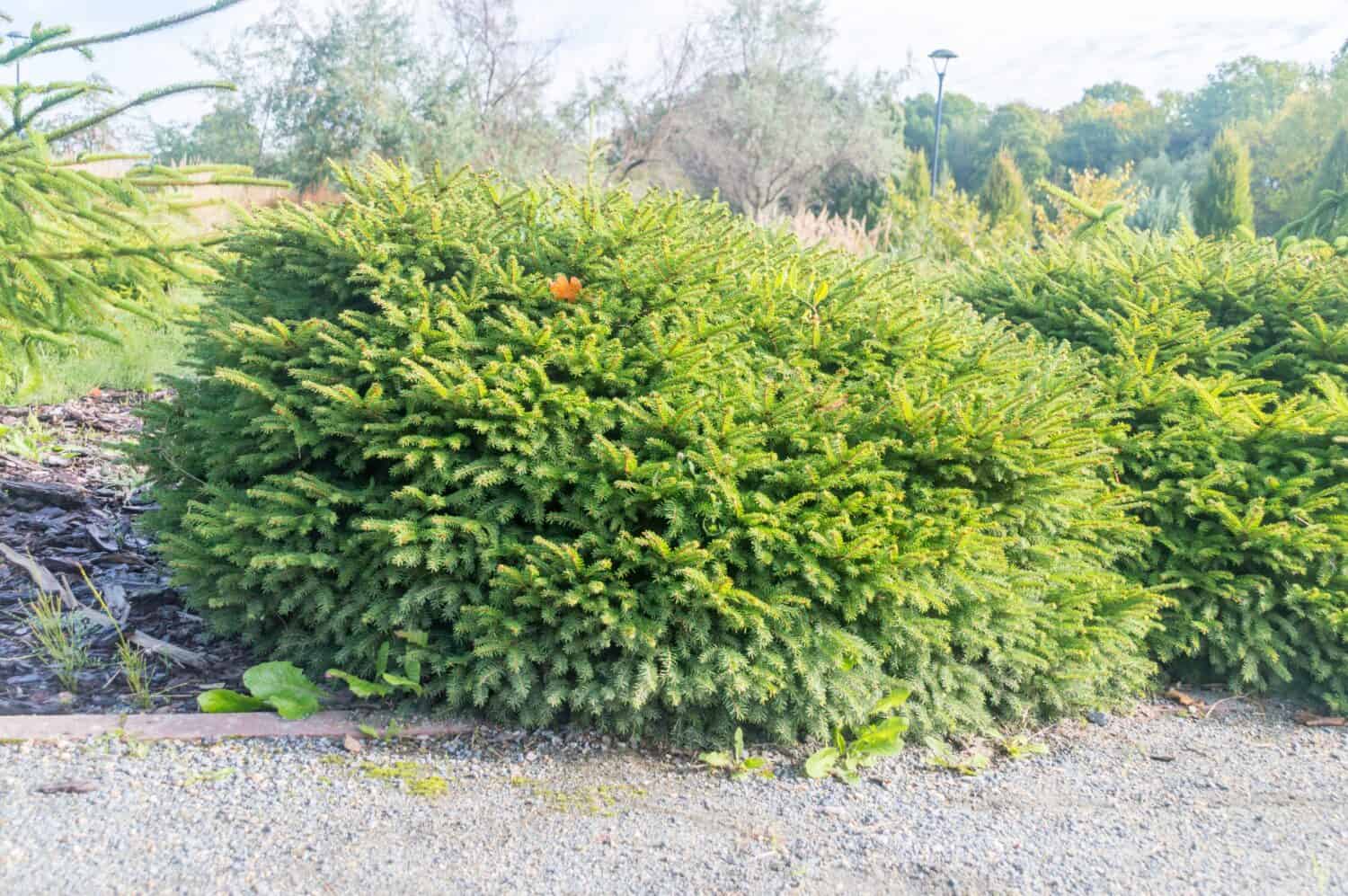
With its green needles, the dwarf Norway spruce is one of the best conifers to plant in your garden.
©Robson90/Shutterstock.com
The dwarf Norway spruce is a captivating style of spruce, which, in its early growth stages, presents a dense and rounded profile. With age, its spread widens, and its shape becomes slightly flattened, resembling a roundish mound. The lower branches grow outwards, while the upper branches retain their upward trajectory.
This slow-growing dwarf evergreen is characterized by its vivid, fresh green needles and compact structure. It’s an excellent option for smaller landscapes and rock gardens due to its broad irregular shape and flat top. Besides, its robustness and hardiness make it a top-notch choice.
With a consistent growth rate of 3 to 5 inches per year, the dwarf Norway spruce matures into a flattened mound about 4 feet wide over a decade. It’s the perfect low-maintenance addition to your garden and yard.
4. Dwarf Hinoki Cypress
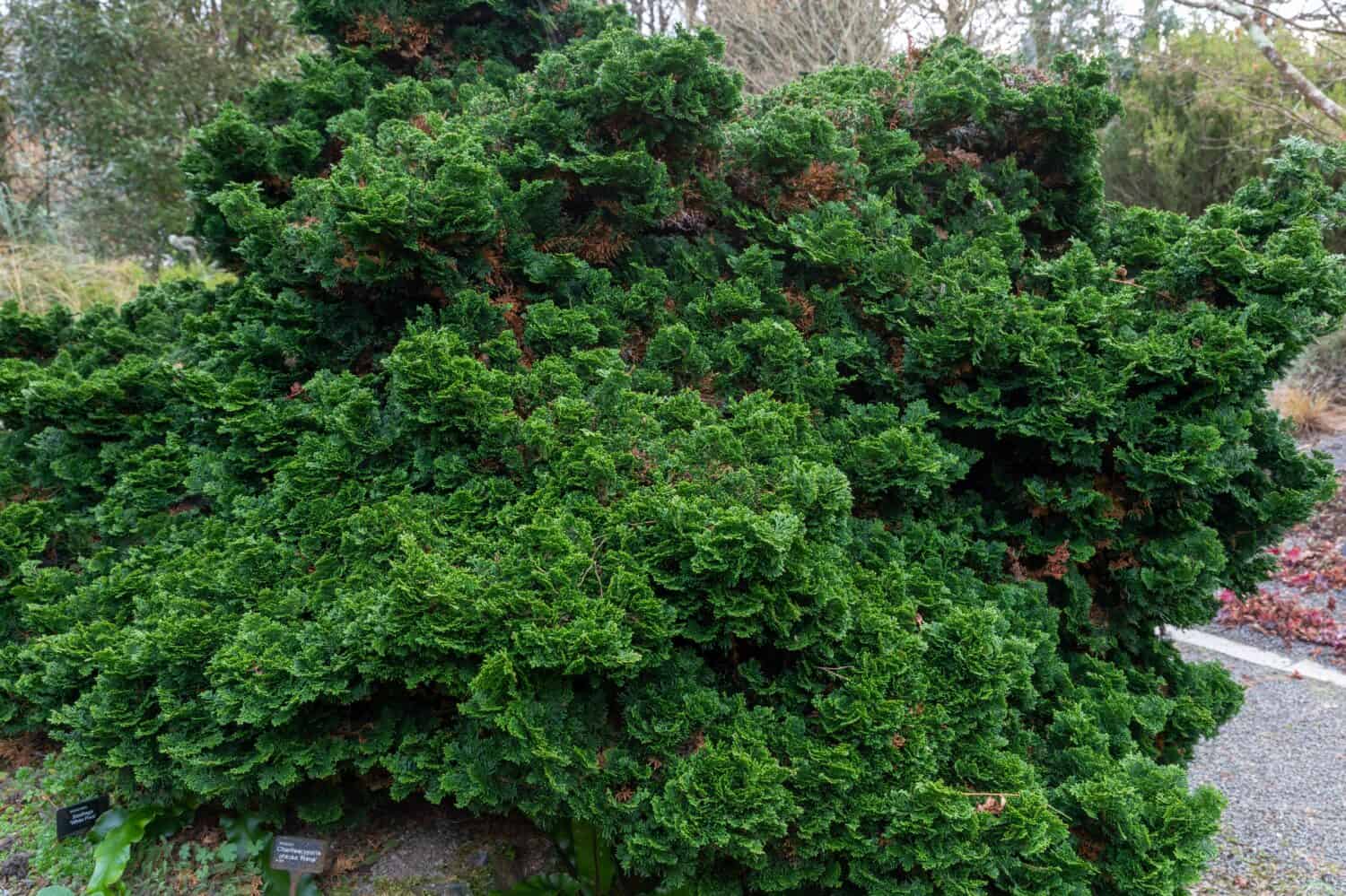
Contributing a layer of texture and depth to any garden, the dwarf Hinoki cypress is a great choice for a dwarf conifer.
©David_Maddock/Shutterstock.com
The dwarf hinoki cypress showcases foliage in a lush, deep green hue that remains vibrant throughout the year. It develops distinctly rounded fans, somewhat resembling shell clusters. The emergence of new, lighter green sprouts in the spring gives a refreshing appeal to the plant.
This dwarf cypress variety contributes a unique layer of texture and depth when incorporated into rock gardens, entryways, or any other planting locations. It proves to be a particularly good choice for gardeners working with limited spaces. Additionally, this dwarf evergreen makes an excellent choice for topiary art and bonsai crafting.
This smaller version of a native Japanese tree grows at a rate of approximately 1 to 6 inches per year. It can swiftly reach a height of 3 feet, eventually peak at 6 feet, and mature to an impressive height of 10 feet with a spread of 4 to 6 feet.
5. Dwarf Alberta Spruce
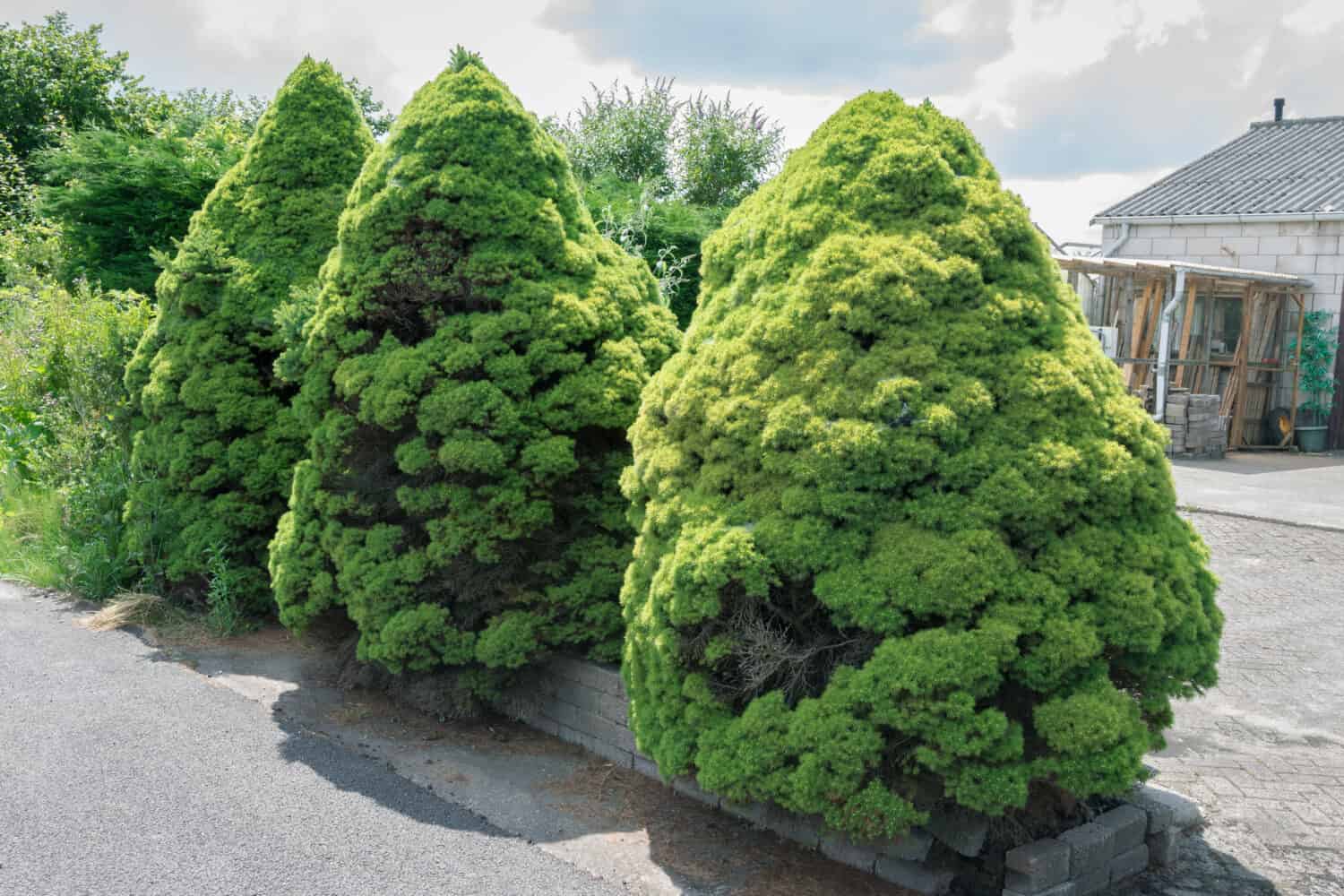
A great addition to an entrance, driveway, or walkway, the dwarf Alberta spruce has a pyramid-shaped growth pattern.
©Menno van der Haven/Shutterstock.com
The dwarf Alberta spruce is a dwarf conifer appreciated for its unique pyramid-shaped growth pattern, almost like a Christmas tree. Its evergreen foliage, deep green in color, lightens during the spring. These needles retain their green color, even during winter.
A popular landscaping technique involves using a pair of dwarf Alberta spruces to border an entrance, driveway, or walkway. For instance, placing two spruces on either side of the front porch steps can effectively highlight the entrance.
Its bright green needles require minimal upkeep to maintain their vibrant look, and its slow growth rate makes this spruce a favorite choice for container planting. The growth rate of the dwarf Alberta spruce is modest, at just 2 to 4 inches annually.
6. Bird’s Nest Spruce
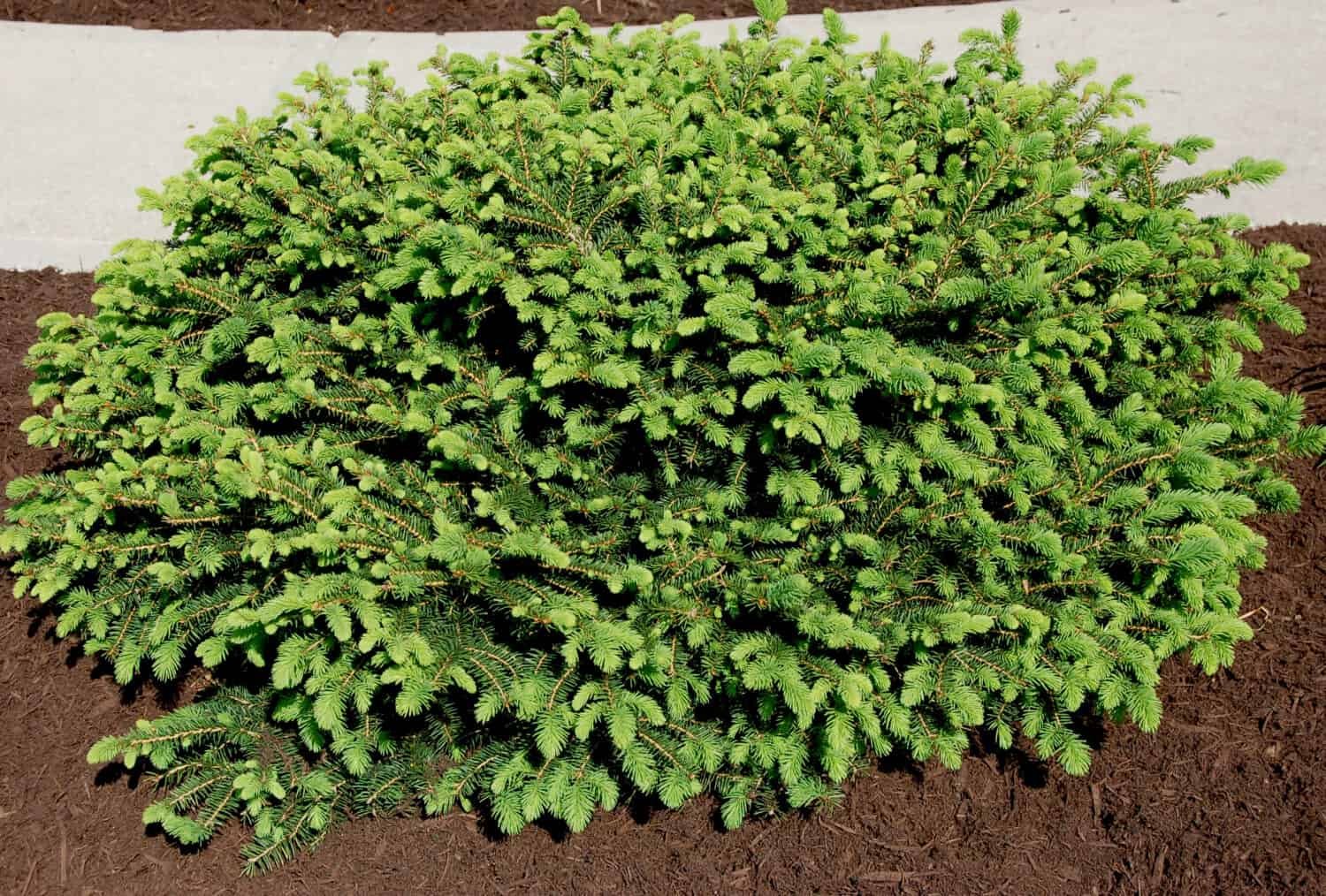
Water the bird’s nest spruce regularly during periods of extreme heat.
©Stephen VanHorn/Shutterstock.com
The bird’s nest spruce is a dwarf conifer that grows close to the ground and takes on a rounded shape with a noticeably flat top. Its dark green needles are shorter and more delicate than those of the common species.
This robust, low-lying evergreen makes an excellent choice for rock gardens, retaining walls, or as a small highlight in a berm or courtyard. It can add much-needed charm to various locations, especially during winter.
During periods of extreme heat or when planted in containers, it should be watered regularly. In its first decade, it usually grows 1 to 2 feet tall and spreads 3 to 4 feet wide, but it can reach up to 8 feet in height as it matures.
7. Blue Star Juniper
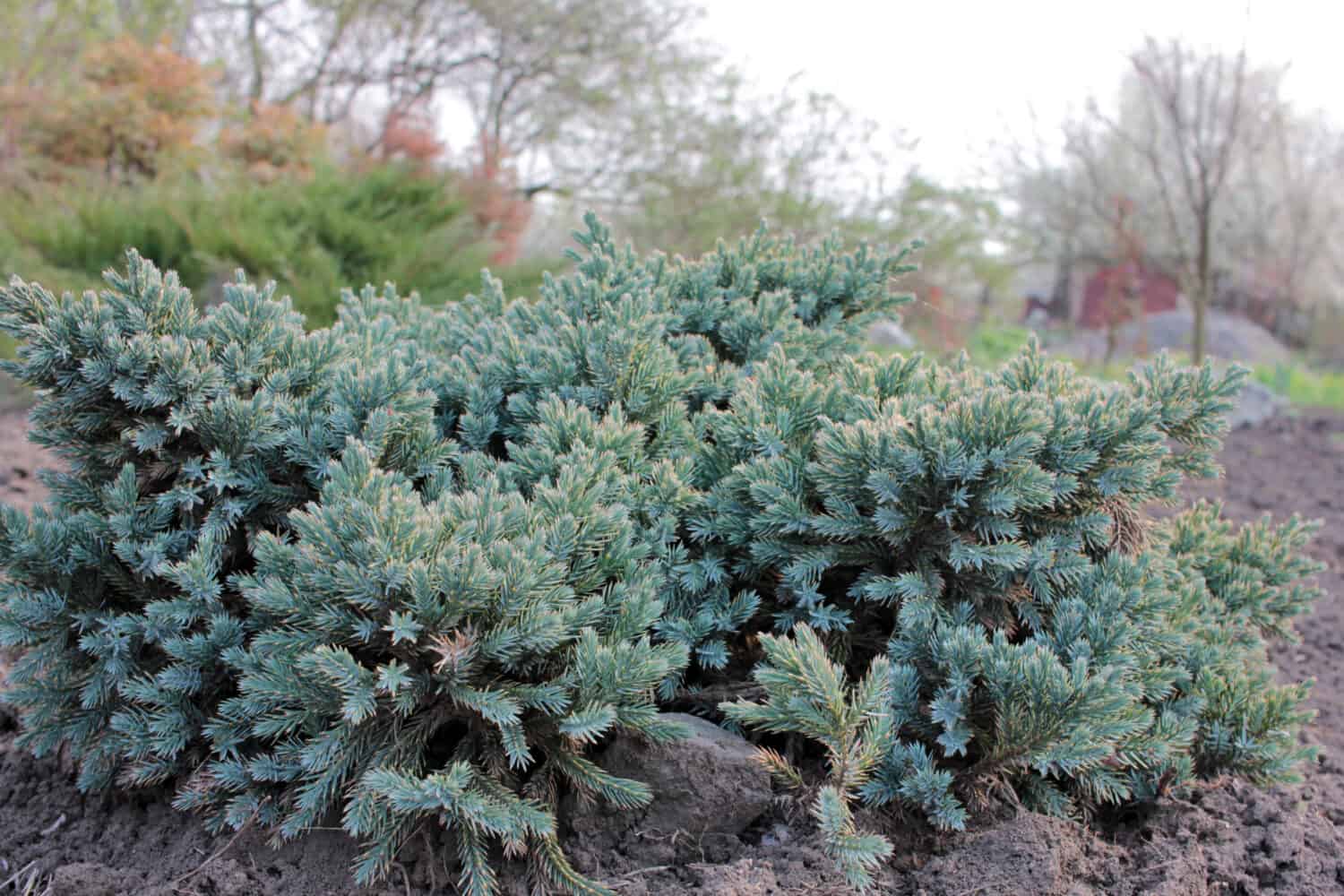
The silvery-blue needles of the blue star juniper will help it stand out in gardens.
©Juver/Shutterstock.com
The blue star juniper is an evergreen shrub with densely packed, silvery-blue needles. When viewed from above, the needle clusters on the miniature stems give an impression of stars, hence the name. Its awl-shaped needles contrast with the long, slender ones found on trees like the eastern white pine, with which many people are more familiar.
Honored with the coveted Award of Garden Merit by the Royal Horticultural Society, the blue star juniper is an exceptional choice as a foundational plant. It also thrives in rock gardens, as a standalone specimen, or planted en masse as ground cover.
This plant grows slowly, reaching a modest height of 2 to 3 feet when fully mature. It’s inclined to grow horizontally rather than vertically. Among other dwarf conifers, the blue star juniper may be one of the least demanding plants you could choose for your garden.
8. Dwarf Japanese Cedar

Reaching up to 3 to 4 feet in height and spread, the dwarf Japanese cedar is one of the best dwarf conifers to plant.
©Peter Turner Photography/Shutterstock.com
The dwarf Japanese cedar is a compact, densely branched shrub of small stature. Its tidy, rounded form is easy to maintain. The foliage, with its unique texture, is an appealing feature. Bright green-yellow foliage provides a delightful contrast with other plants in your garden.
There are several applications in the landscape where the dwarf globe Japanese cedar can be recommended. These include group planting, hedges or screens, rock or alpine gardens, general garden use, and container planting.
Growing slowly at 3-4 inches per year, the dwarf Japanese cedar evolves into an elegant specimen. Its mature size reaches up to 3-4 feet both in height and spread.
9. Golden Globe Arborvitae
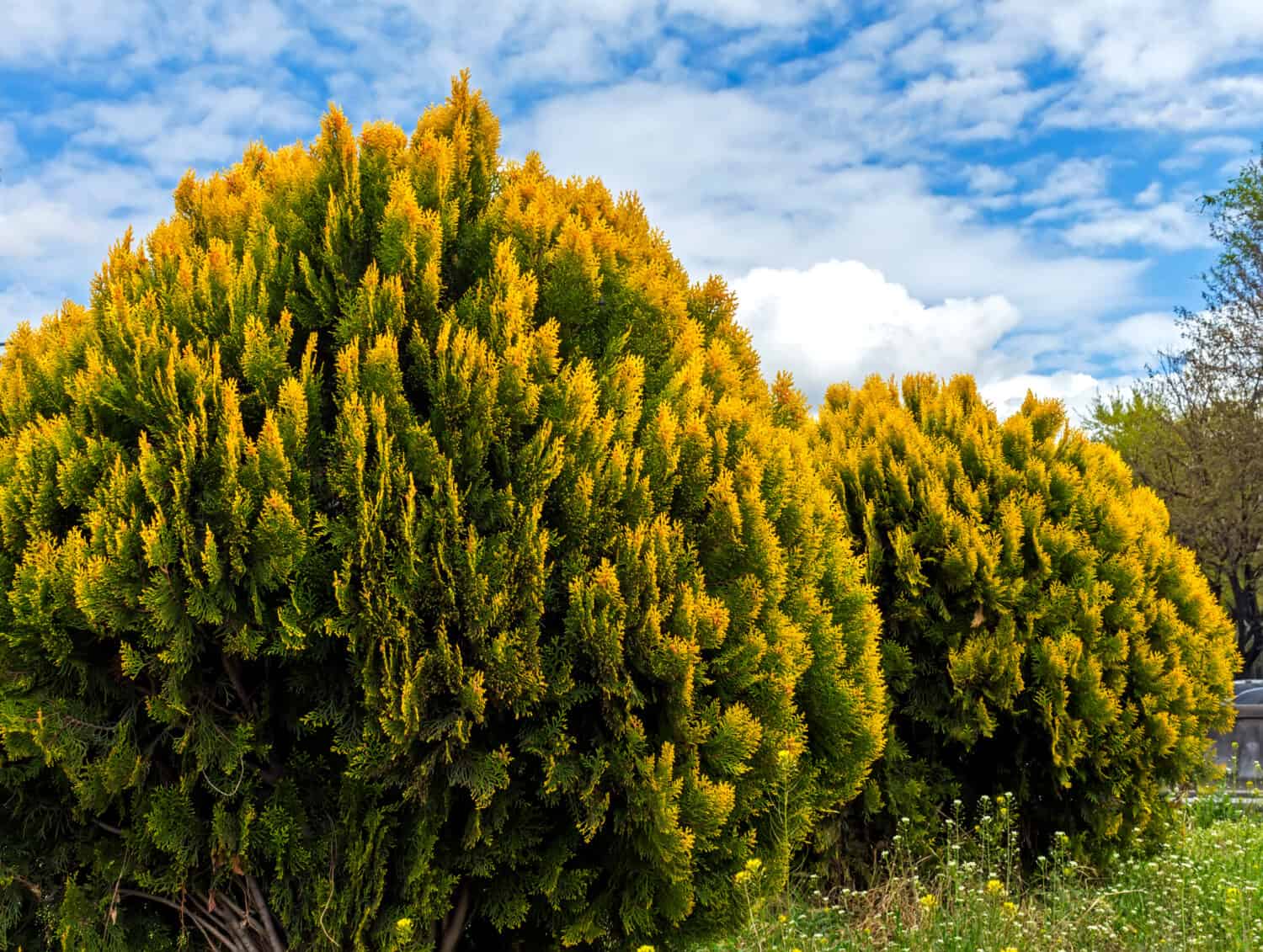
As its name may suggest, the golden globe arborvitae has golden yellow foliage.
©Mikhail Pogosov/Shutterstock.com
The golden globe has a distinct foliage characterized by its flat, soft leaves arranged in fan-like sprays. Fresh growth boasts a gorgeous golden yellow hue, while the mature foliage underneath retains a vibrant green color.
Its unique shape and color make the golden globe arborvitae a remarkable addition to any landscape. The combination of its spherical form and golden yellow foliage enhances the beauty of any outdoor area. Its size and form also make it an ideal choice for a low hedge or screening plant.
This evergreen plant naturally maintains its shape without the need for frequent trimming. Its growth is limited to a height of 3-5 feet, making it an excellent choice for foundation plantings.
10. Dwarf Korean Fir

Perfect for various landscape uses, the dwarf Korean fir has green needles that darken in the summer.
©Maria Evseyeva/Shutterstock.com
The dwarf Korean fir is an evergreen conifer that grows into a compact, round, flat-shaped cushion. It features appealing fresh green needles in spring that darken as summer progresses. This plant also produces numerous purple cones that sit upright on its branches, creating a striking contrast against the greenery.
This type of dwarf Korean fir is suitable for various landscape uses such as mass planting, rock gardens, and general garden use. Due to its compact size, it also serves well in small gardens and containers.
Growing at a slow pace of about 2 inches per year, it reaches a height of 2 to 3 feet after a decade.
Planting and Care Tips
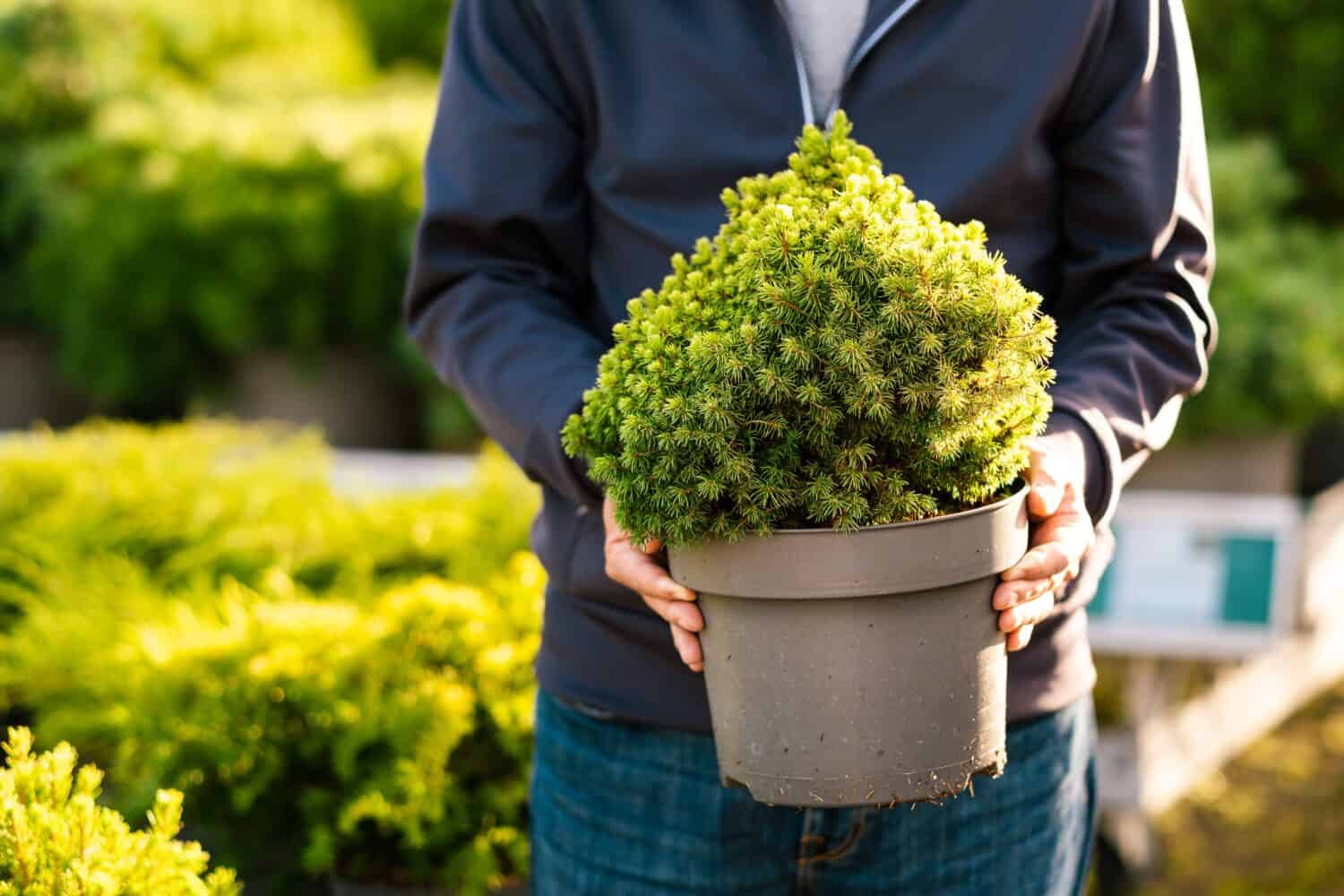
Make sure to look after your dwarf conifer according to the specific plant you get.
©Olga Miltsova/Shutterstock.com
Planting and taking care of dwarf conifers may seem challenging at first, but with some key guidelines, your tiny trees will be healthy and thriving in no time.
Choosing the Right Location
The first thing you need to do before planting your dwarf conifers is to identify an ideal spot in your garden. Consider the specific light, soil, and space requirements of the particular variety of conifer you are planting.
Planting
Once you’ve selected the ideal location, it’s time to plant your dwarf conifer. Dig a hole that’s twice the width of the root ball and the same depth. Make sure to break up the soil at the bottom of the hole to improve drainage. Place your conifer in the hole and fill it with soil, firming it gently around the base. Water the plant thoroughly.
Mulching
Apply a layer of organic mulch around the base of the conifer, but be sure not to pile it against the trunk. Mulch helps to retain moisture, regulate soil temperature, and reduce weed competition.
Watering
While dwarf conifers are generally drought-tolerant once established, they need regular watering during the first few years or during dry spells. The soil should be kept evenly moist but never waterlogged.
Feeding
Dwarf conifers typically don’t require additional fertilization if they are planted in rich, well-drained soil. However, if your soil is poor, you might want to consider applying a slow-release granular fertilizer in early spring. Make sure to follow the manufacturer’s instructions!
Pruning
Most dwarf conifers require very little pruning. However, if you need to shape the plant or remove dead or diseased branches, do so in late winter or early spring before new growth starts.
Winter Protection
While many dwarf conifers are hardy and can withstand cold temperatures, some might need extra protection during severe winters. You can protect them by placing a burlap screen around the plants to shield them from harsh winds and heavy snow.
Pest and Disease Management
Keep an eye out for common pests such as spider mites, aphids, or scale. Most of these can be controlled with insecticidal soaps or oils. Diseases like root rot can be prevented by ensuring your conifers are planted in well-draining soil and are not overwatered.
With these tips in mind, your dwarf conifers should thrive, providing year-round beauty to your garden or yard. By carefully considering the individual needs of each variety and ensuring they are met, you will be rewarded with a stunning, resilient, and low-maintenance addition to your outdoor space.
Summary of the Best Dwarf Conifers to Spruce Up Your Garden and Yard
| Dwarf Conifers | Maximum Height | USDA Hardiness Zone | |
|---|---|---|---|
| 1 | Dwarf Mugo Pine | 3-5 feet | 2-8 |
| 2 | Dwarf Blue Spruce | 10-12 feet | 3-8 |
| 3 | Dwarf Norway Spruce | 3-6 feet | 3-7 |
| 4 | Dwarf Hinoki Cypress | 10 feet | 5-8 |
| 5 | Dwarf Alberta Spruce | 8 feet | 3-6 |
| 6 | Bird’s Nest Spruce | 8 feet | 3-8 |
| 7 | Blue Star Juniper | 2-3 feet | 4-8 |
| 8 | Dwarf Japanese Cedar | 3-4 feet | 5-9 |
| 9 | Golden Globe Arborvitae | 3-5 feet | 2-8 |
| 10 | Dwarf Korean Fir | 2-3 feet | 5-8 |
Thank you for reading! Have some feedback for us? Contact the AZ Animals editorial team.






